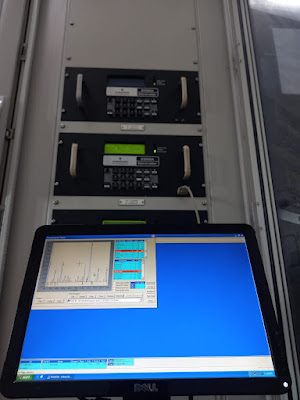What
is Serial Protocol? Understanding the basics series!
The terms RS-232, RS-422, and RS-485 are
very common for an automation professional.
The common serial interface/link RS-232 was introduced by EIA – Electronics Industry Association of America; RS stands for Recommended Standards and the number (suffix -232) refers to the interface specification of the physical device.
The Telecommunications Industry Association
(TIA) was formed in 1988, by merging the telecom arms of the EIA and the United States Telecommunications
Suppliers Association. The prefix changed again to EIA/TIA-232, (along with all the other
serial implementations of course). So now we have TIA-232, TIA-485 etc.
Why do we use DB-25,
DB-9, DB-xx ?
Originally developed by Cannon for military use, the D-sub(miniature) connectors are so-called because the shape of the housing’s mating face is like a ‘D’. The connectors have 9-, 15-, 25-, 37- and 50-pin configurations, designated DE-9, DA-15, DB-25, DC-37 and DD-50, respectively. Probably the most common connector in the early days was the 25-pin configuration (which has been around for about 40 years), because it permitted use of all available wiring options for the RS-232 interface.
It was expected that RS-232 might be used for synchronous data communications, requiring a timing signal, and thus the extra pin-outs. However this is rarely used in practice, so the smaller 9-position connectors have taken its place as the dominant configuration (for asynchronous serial communications).
Also available in the standard D-sub configurations are a series of high density options with 15-, 26-,44-, and 62-pin positions. (Possibly there are more, and are usually variations on the original A,B,C,D, or E connector sizes). It is common practice for electronics manufacturers to denote all D-sub connectors with the DB- prefix... particularly for producers of components or board-level products and cables. This has spawned generations of electronics enthusiasts and corporations alike, who refer to the humble D-sub or ‘D Connector’ in this fashion. It is for this reason alone that we continue the trend for the benefit of the majority who are so familiar with the ‘DB’ terminology
The RS-232 standard defines 25 electrical connections. The
electrical connections are
divided into four groups:
- 1.
Data
lines
- 2.
Control
lines
- 3.
Timing
lines
- 4.
Special
secondary functions
DATA TRANSFER RATE VS DISTANCE
The rate at which voltage can ‘slew’ from one logic level
to another depends mainly on
the cable capacitance, and the capacitance increases with
cable length. The length of the
cable is limited by the number of data errors acceptable
during transmission. The RS-
232 D&E standard specifies the limit of total cable
capacitance to be 2500 pF. With
typical cable capacitance having improved from around 160
pF/m to only 50 pF/m, the
maximum cable length has extended from around 15 meters (50
feet) to about 50 meters
(166 feet).
SUMMARY OF RS/TIA232 REVISIONS:
A summary of the main differences between RS-232 revisions,
C, D, and E are discussed
below.
REVISION D (RS-232D)
The 25-pin D type connector was formally specified. In
revision C, reference was made
to the D type connector in the appendices and a disclaimer
was included revealing that it
was not intended to be part of the standard, however it was
treated as the de-facto
standard.
The voltage ranges for the control and data signals were
extended to a maximum limit
of 25 volts from the previously specified 15 volts in
revision C.
The 15 meters (50 foot) distance constraint, implicitly
imposed to comply with circuit
capacitance, was replaced by ‘circuit
capacitance shall not exceed 2500pF. (Standard RS-232 has a capacitance of 50pF
/ ft.
REVISION E (RS-232E)
Revision E formally specifies the new 26-pin alternative connector, the ALT A connector. This connector supports all 25 signals associated with RS-232, unlike the 9- pin connector, which has become associated with RS-232 in recent years. Pin 26 is currently not used. The technical changes implemented by RS-232E do not present compatibility problems with equipment confirming to previous versions of RS-232. This revision brings the RS-232 standard into line with international standards CCITT
V.24, V.28, and ISO 2110.
THE
RS -422 INTERFACE STANDARD
The RS-422 standard introduced in the early ’70s defines a
balanced, or differential, data
communications interface using two separate wires for each
signal. This permits very
high data rates and minimizes problems with varying ground
potentials because the
ground is not used as a voltage reference, as in RS-232 and
RS-423. RS-422 is an
improvement on RS-423 and allows:
• Data to be communicated at distances of up to 1200 m (4000 feet, similar to RS-423)
• Data rates of up to 10 Mbps (increase of
100 times)
• Only one line driver on a line
• Up to 10 line receivers to be driven by one line driver The differential voltages between the A and B lines are specified as:
–2 V to –6V with respect to the B line for a binary 1 (MARK or OFF) state
Reference
Practical Data Communications for
Instrumentation and Control
(IDC Technology) Steve Mackay CPEng BSc
(ElecEng) BSc (Hons) MBA, Edwin Wright MIPENZ BSc (Hons)
BSc (Elec Eng), John Park ASD -











0 Comments